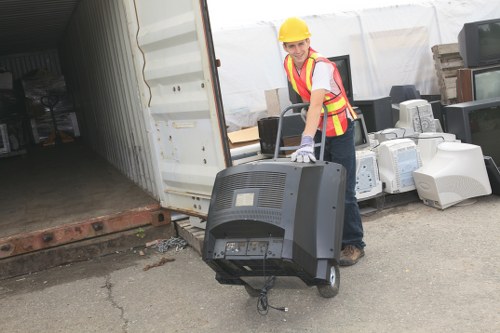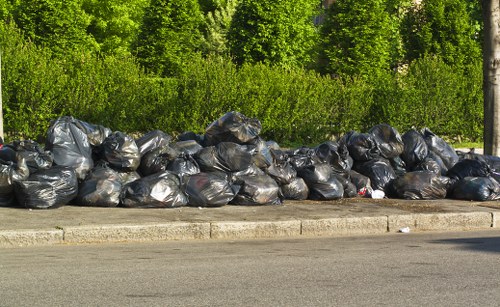Comprehensive Guide to Council Large Item Collection in Charing Cross

When it comes to disposing of large household items, Council Large Item Collection Charing Cross offers an efficient and hassle-free service. Whether you're redecorating, moving, or simply decluttering, understanding how to utilize this service can save you time and effort.
The council provides regular collection schedules, allowing residents to plan ahead for their disposal needs. From old furniture and appliances to bulky garden equipment, Charing Cross ensures that large items are collected responsibly and sustainably.
Before scheduling a collection, it's essential to know the types of items accepted and the guidelines to follow. This ensures a smooth process and helps the council manage waste effectively.

How to Schedule a Large Item Collection
Scheduling a large item collection in Charing Cross is straightforward. Residents can book a collection through the council's official website or by contacting their customer service. It's advisable to book in advance, especially during peak seasons.
When scheduling, provide detailed information about the items you wish to dispose of. This includes the size, type, and approximate weight of each item. Accurate information helps the council allocate the appropriate resources for your collection.
Additionally, ensure that the items are accessible for collection. Clear the pathway to the collection point to allow easy removal by the collection team.

Items Eligible for Collection
- Furniture such as sofas, tables, and chairs
- Electrical appliances like refrigerators and washing machines
- Garden equipment including lawnmowers and sheds
- Old mattresses and bedding
- Bulky waste like carpets and curtains
It's important to note that certain items may require special handling or may not be accepted due to environmental regulations. Always check the council's guidelines to ensure your items are eligible for collection.
Properly preparing your items can also facilitate a smoother collection process. Disassemble furniture if possible and remove any non-recyclable parts.

What Happens to Your Items?
Once collected, large items undergo a sorting process to determine how they will be disposed of. Recyclable materials are separated and processed, reducing landfill waste and promoting environmental sustainability.
Items that can be refurbished are often donated to local charities or community groups. This not only helps those in need but also extends the life cycle of usable items.
For items that cannot be recycled or donated, the council ensures they are disposed of in an environmentally responsible manner, adhering to all relevant regulations.

Cost and Payment
Generally, the Council Large Item Collection service in Charing Cross is free for residents. However, there may be fees for additional services, such as extra collections or hazardous waste disposal.
It's important to verify any potential costs when booking your collection. The council's official website provides detailed information on any applicable fees and payment methods.
Free services may be subject to availability, so early booking is recommended to avoid any unexpected costs.
Environmental Impact and Sustainability
The council's commitment to environmental sustainability is evident in its large item collection service. By promoting recycling and proper disposal, Charing Cross minimizes the environmental footprint of waste management.
Residents are encouraged to participate actively by following guidelines and preparing items appropriately for collection. This collective effort contributes to a cleaner and greener community.
Educational initiatives and community programs also support the council's sustainability goals, raising awareness about responsible waste disposal.

Benefits of Using Council Services
Utilizing the council's large item collection service offers numerous benefits, including convenience, cost-effectiveness, and environmental responsibility. Residents can dispose of bulky items without the hassle of transporting them to landfill sites.
The service also alleviates potential health and safety risks associated with improper disposal, such as injury from handling heavy items.
Moreover, supporting council services fosters a sense of community and shared responsibility towards maintaining a clean and sustainable environment.
Nearby Areas to Charing Cross Benefiting from Large Item Collection
Charing Cross is centrally located, making its large item collection services accessible to several neighboring areas. These areas benefit from the same efficient and environmentally conscious waste management practices.
- Soho: Just a short walk from Charing Cross, Soho residents can easily access large item collection services for their disposal needs.
- Covent Garden: Known for its vibrant market, Covent Garden benefits from regular large item collections, helping maintain its bustling environment.
- Bloomsbury: The academic heart of London, Bloomsbury residents appreciate the convenience of council services for disposing of large items.
- Holborn: With its mix of residential and commercial properties, Holborn efficiently uses large item collection services to manage waste.
- St Giles: Close to Charing Cross, St Giles enjoys the same reliable large item collection, aiding in effective waste management.
- Kingly Court: This area benefits from the council's commitment to sustainability through regular large item collections.
- Granary Square: Residents here appreciate the ease of scheduling large item collections for their homes.
- Russell Square: The proximity to Charing Cross makes Russell Square a favorable location for accessing large item collection services.
- British Museum Area: Managing waste efficiently, this area takes advantage of the council's large item collection initiatives.
- Buckingham Palace Area: Even prestigious areas like Buckingham Palace benefit from the practical large item collection services provided.
Each of these areas has unique features that complement the council's waste management services, ensuring that residents maintain a clean and organized living environment.

Unique Features of Neighboring Areas
- Soho Known for its nightlife and entertainment, efficient waste management helps maintain its vibrant streets.
- Covent Garden The mix of tourism and local businesses relies on regular waste collection for smooth operations.
- Bloomsbury Home to numerous educational institutions, managing large item waste ensures a conducive learning environment.
- Holborn Combining residential and commercial spaces, effective waste management supports the area's diverse needs.
- St Giles Proximity to transport hubs means the council ensures timely waste collection to handle the area's dynamic population.
These features highlight the council's ability to cater to the diverse requirements of different neighborhoods around Charing Cross.
Tips for Efficient Large Item Disposal
To make the most of the council's large item collection service, consider the following tips:
- Plan Ahead: Schedule your collection in advance to ensure availability and avoid delays.
- Prepare Items: Disassemble large items where possible to facilitate easier collection.
- Follow Guidelines: Adhere to the council's disposal guidelines to ensure items are eligible for collection.
- Sort Items: Separate recyclable and non-recyclable items to support the council's sustainability efforts.
- Clear Access: Ensure that the collection point is easily accessible for the collection team.
By following these steps, residents can ensure a smooth and efficient large item collection process.

Common Mistakes to Avoid
While utilizing the large item collection service, be mindful of common mistakes that can hinder the process:
- Failing to schedule in advance, leading to missed collection dates.
- Overloading the collection point, making it difficult for the team to collect items.
- Including restricted items that the council cannot collect.
- Neglecting to prepare items properly, resulting in delays or refusal of collection.
- Ignoring safety guidelines when handling and preparing bulky items.
Avoiding these mistakes ensures a seamless experience with the council's large item collection service.
Proper preparation and adherence to guidelines not only expedite the collection process but also support the council's environmental initiatives.
Residents are encouraged to familiarize themselves with the council's policies to optimize their large item disposal.
Conclusion
The Council Large Item Collection Charing Cross service is a valuable resource for residents looking to dispose of bulky items responsibly. By understanding how to utilize this service effectively, individuals can contribute to a cleaner environment and maintain an organized living space.
With its commitment to sustainability and community support, the council ensures that waste management is handled efficiently, benefiting both residents and the broader environment.
Embrace the convenience and responsibility of the large item collection service to enhance your living experience in Charing Cross.
Frequently Asked Questions
1. What items are not accepted in the Council Large Item Collection?
Items such as hazardous waste (paints, chemicals), asbestos, and certain types of electronics may not be accepted. It's best to check the council's official guidelines for a comprehensive list.
2. Is there a limit to the number of large items I can collect at once?
While there isn't a strict limit, it's advisable to schedule separate collections for multiple large items to ensure efficient service.
3. How often does the council schedule large item collections?
Collection schedules can vary, often depending on demand and seasonal factors. It's recommended to book in advance through the council's website or customer service.
4. Can I dispose of old appliances through the large item collection?
Yes, old appliances like refrigerators, washing machines, and dryers are typically accepted. Ensure they are properly prepared and meet the council's guidelines.
5. What should I do if my large item is not collected on the scheduled date?
If a large item isn't collected as scheduled, contact the council's customer service to report the issue and arrange for an alternative collection date.
